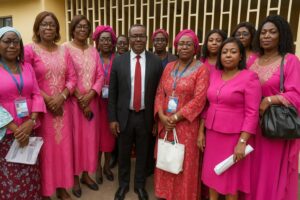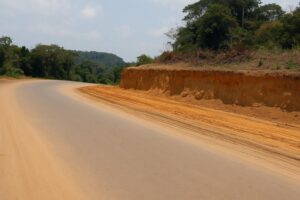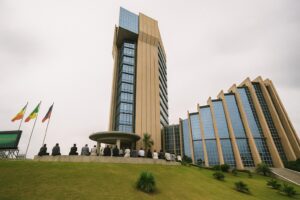Cassava at the heart of food security
Under the late-season sun of Brazzaville, sixty young agronomists and lead farmers have left their villages for a rare two-week boot camp dedicated to cassava, the country’s unrivalled staple. The workshop, opened on 15 September, signals Congo-Brazzaville’s newest push to shield plates from global price shocks and inflation.
Hosted inside the protected agricultural zones of Cuvette and Cuvette-Ouest, the session focuses on both high-yield farming and small-scale processing, two weak links often blamed for post-harvest losses. By targeting these districts, organisers hope to transform a belt already famous for plantain and cacao into a cassava powerhouse.
Chinese expertise meets Congolese fields
The training is steered by the Chinese Academy of Tropical Agricultural Sciences, whose vice-president Li Jihua flew in with a team of plant pathologists, soil chemists and food technologists. “We have brought our very best,” Li told the class, promising practical demonstrations rather than classroom theory this week.
The Sino-Congolese partnership, launched last year, aligns with President Denis Sassou Nguesso’s ambition to cut the nation’s food import bill. Official data show Congo spends roughly 500 billion CFA each year on foreign staples. Cassava, already grown nationwide, is viewed as the quickest lever to reverse that trend within rural household budgets.
A mobile laboratory installed near Oyo allows trainees to test starch content, cyanide levels and moisture in real time. The same container unit can grind, press and sun-dry chips, turning raw roots into gari, attiéké or standard flour ready for bakeries that increasingly mix cassava with wheat imports.
Voices from the training ground
Paul Valentin Ngobo, minister in charge of Agriculture, Livestock and Fisheries, urged participants to become “knowledge relays” across the ten represented districts. Clad in a straw hat, he reminded them the course was fully funded by the public budget, insisting taxpayers deserve visible, measurable returns within one harvest cycle.
Spokesperson Bodech Barech Andire, who manages a 12-hectare farm outside Makoua, praised the blend of field drills and lab sessions. “I had never checked cyanide myself; now I can guarantee safer gari for my neighbours,” he said, drawing applause from classmates already filming the moment for WhatsApp groups back home.
Local chiefs of sector agriculture, seated in the back row, quietly took notes on disease-resistant varieties supplied by the International Institute of Tropical Agriculture. Their presence, officials hope, will help smooth future distribution of cuttings and limit the middlemen who often inflate prices before smallholders get access locally.
Expected ripple effect across 10 districts
Each trainee will return with starter kits containing 300 quick-maturing stems, basic pruning tools and pictorial manuals explaining everything from mulch thickness to ph balance. The ministry predicts that, with a 70 percent survival rate, the initial batch could cover 18 hectares and generate fresh stems for 100 hectares next season.
District agronomists will supervise the plots, using geotagged phone pictures to feed a new dashboard developed with the National Statistics Institute. The tool will measure yield, rainfall and market prices, offering decision-makers near real-time evidence to adjust fertiliser subsidies before the next supplementary budget is debated in parliament.
Finance specialists welcome the focus on data, noting previous programmes sometimes evaporated once donor monitoring ended. “Tracking tonnage against rainfall is the only way to prove value for money,” analyst Prudence Okemba argued on national radio, adding that transparent dashboards can also reassure banks considering long-term rural credit lines.
Beyond statistics, cassava’s cultural weight remains central. In the village of Loukoléla, elders have already invited graduates to the November Nkoua festival, where fufu tasting draws crowds larger than some football fixtures. Organisers believe showcasing improved textures there could sway conservative cooks traditionally sceptical of new seed material.
Toward a resilient rural economy
Economists calculate that raising cassava yields from eight to thirteen tonnes per hectare would add about 0.3 percent to national GDP, mostly through reduced imports. The figure may look small on paper, yet it equals the entire annual budget of several northern municipalities combined, underlining the initiative’s strategic weight.
Job creation is another dividend. Agro-industry investors operating in Pointe-Noire say consistent supply of high-grade flour could spur the opening of two additional biscuit lines and a pilot bio-ethanol plant. Combined, those projects might employ 350 workers, many of them women traditionally active in cassava peeling collectives there.
Environmental benefits also surface. Cassava’s deep root system improves soil structure and tolerates erratic rainfall, two assets in a region already experiencing shorter rainy seasons. Ministry climatologists intend to compare pilot plots with maize to quantify carbon sequestration, an exercise that could unlock fresh climate-financing opportunities for Congo.
As the ceremony closed, Li Jihua handed Minister Ngobo a miniature mortar carved from ebony, a nod to the pounding that turns cassava into foufou. Cameras clicked, but the quiet promise behind the gift was louder: shared know-how, if honoured, can keep Congolese tables full for many seasons to come.






















